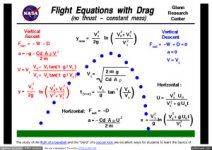Gatzby
Well-known member
While I agree marking is of primary importance in the recovery of game the delivery part is just training. I also agree Field bred springers are damn good!Question was "best on down birds & cripples" which to me is almost entirely encompassed by marking a bird, getting to it, & finding it. Retrieving may have to be trained with some dogs & is the icing on the cake. A nicely finished retrieve is trained & is the ice cream on the same plate w/ the well-iced cake. An efficient, nicely finished retrieved comes with experience. But there are different approaches to marking & finding. Some take an orderly approach to it. Some, like me, allow a dog to mark a downed bird himself & immediately hit it like a ton of bricks. Or at least get to the drop site ASAP. Honestly, I've never seen a breed do this better & faster than a FBESS. And with wild birds in heavy cover, that's where finding & retrieving start. By getting there! Now, once a dog is in the drop zone, I believe any well-bred hunting breed will "find" equally well. A well-bred lab is probably most apt to then carry the bird to his owner (my definition of "retrieve") without much training. It's all about which aspects of the game are most important to you. For me, it's marking & getting there. I hunt a lot (relatively) in areas w/ birds, so my dogs get quite a lot of real-world experience (although not like a guide's dogs). The whole marking, getting there & finding thing improves immensely w/ experience, as dogs become more familiar with a wounded rooster's tricks. And then the retrieving thing. Whereas a lab may just do it, my dogs have to figure out they're tougher than a rooster & can carry it through 10" of snow & cattails. But it doesn't take long & once they learn things like that, they're 100% reliable. All well-bred hunting dogs have the tools to excel in this area. Training, hands-on experience, & personal preference will determine which adult dog is "best". The answer most people give (rightfully so) is, "My dog."
The reasons 10 of the last 11 National Field Champions have been labs is not because they hand a bird to the handler, its because they can mark the area of fall and recover the bird. Other things like biddability, temperament, and work ethic also play into the equation. Also the size of the Labs gene pool helps, field bred Goldens are exceptional retrievers there just isn't as many competing. Heck not that many years go Goldens cleaned up in the retriever competition world. They may do so again as responsible breeders are putting out some nice dogs.
While some believe marking can be improved through training its impossible to turn a poor marking dog into an all-star but any dog can be trained to retrieve in a passible fashion (if they can find the bird)!
I have ran my Labs in a few AKC Flushing Breed Hunt Tests (as well as many retriever HT"s and FT"s). Generally speaking our scores in the quartering portion only rate average compared to the Master level Springers, but we smoke the retrieving portion of the test earning us a ribbons.
From Page 27 of the AKC Field Trial Rules and Guidelines for Retrievers
"Accurate marking is of primary importance. A dog which marks the fall of a bird, uses the wind, follows a strong cripple, and will take direction from his handler is of great value."
The delivery or retrieve (by your definition) is a very small part of recovering downed and crippled birds in my opinion.
Last edited:

